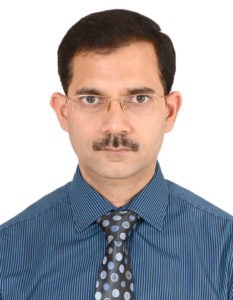Early Clinical Exposure (ECE) is a teaching-learning methodology, which fosters exposure of medical students to patients as early as in the first year of medical college. The goals of ECE are to provide social relevance and a context for application of the basic science teaching. The outcomes are: gain in medical knowledge, achieving few basic clinical skills, and internalizing a wide range of attitudes.
The learning experiences offered in the preclinical phase play an important role in laying a strong foundation for learning clinical subjects. The objectives of the preclinical phase are not only to cater to the framed subject-wise outcomes, but also to keep the students motivated and make learning relevant to patient care. Patient interaction in supervised settings will facilitate students to learn from patients in a holistic manner. Students will get an opportunity to understand disease as perceived by patients and its financial, social, physical and psychological impact on them. Early involvement in the healthcare environment also validates students’ decision to opt for medicine as a career.
There have been a few concerns expressed by faculty regarding the concept, implementation and assessment of ECE. We are addressing a few of these concerns in a pointwise fashion here:
- Students are already burdened with the curriculum of subjects of Phase 1. Now with the additional load of clinical teaching, less time and importance will be devoted to the basic science subjects. “If a student is forced to learn clinical topics as part of core competencies he will forget the basic mechanisms that are actually core of the subject”.
Early clinical exposure is a teaching-learning strategy that involves introduction of clinical content to enhance the relevance and understanding of the basic science subjects. It is not meant for learning of the diagnosis and disease management, but rather understanding how the altered anatomy, physiology and biochemistry lead to the various manifestations of the disease. Students motivated as a result of these experiences would be more likely to learn with a deeper approach and adopt self- directed learning strategies to achieve their learning targets.
EXAMPLE: Observation of a patient of chronic obstructive pulmonary disease (COPD) during ECE should be followed up with discussion on understanding the reason of slow deep breaths, so that the concept of airway resistance, lung compliance and work of breathing are reinforced. So, to conclude, ECE involves teaching the basic science concepts planned around the clinical content/ case and not teaching the clinical content. If a student understands the basic mechanism and regulations and its importance, he will appreciate the importance of the subjects learnt in preclinical phase.
- When planning the ECE sessions which domain of learning should be addressed?
ECE supplements and enriches the regular teaching and learning of various concepts and clinical skills. ECE should be used, but not limited to achieving the higher learning objectives in the cognitive domain. It will be an excellent tool to develop the attitude of professionalism and effective communication skills. During the first-year clinical exposure should be ideally limited to observation of the doctor-patient interaction and demonstration of some important clinical signs.
EXAMPLE: The objectives of exposing the students to a patient of anemia should be to explain the derangement of functions due to decreased haemoglobin count and the altered hematological investigations expected, along with demonstration of pallor. The objectives however should be extended to include the realization of the social and financial impact of the disease and its treatment.
- Which phase faculty will be responsible to conduct ECE sessions?
ECE is an activity which will require teamwork. The preclinical faculty will be able to decide best, the topics for ECE, frame its objectives and schedule it in their programme. Keeping in mind the purpose of ECE as envisaged by the Medical Council of India (MCI), the preclinical faculty would be the best to conduct these sessions and facilitate the discussion. However, participation of the clinical faculty, although not a must would not be amiss depending on the type of sessions planned.
EXAMPLE: Visit planned to the Blood bank or dialysis unit can be conducted by the faculty involved with the working of these units on a day-to-day basis. ECE sessions for anemia, jaundice, hypertension or diabetes mellitus in OPDs or wards, can be conducted by preclinical faculty themselves.
It always helps to collaborate and discuss with faculty of other phases during planning, and partner with them for the smooth implementation of the sessions. ECE sessions planned in community settings, e.g. for malnutrition, will require greater support of Community Medicine specialists for its planning, implementation and conduct.
- It will be so difficult to organise the ECE sessions for the 100 or more students to the Hospitals. The same patient may not be available the next time an ECE session is planned. The number of faculty are also insufficient. How can we manage?
The large number of students in many of the colleges at present does pose a challenge to the conduct of ECE. But the large number of clinical cases available at most hospitals will provide the solution and so will judicious use of technology. What can be done is that some ECE sessions can be planned in the classroom settings, to help correlate basic science subjects. Videos of real or simulated patients, report of laboratory investigations, photographs and other relevant clinical material can be used.
EXAMPLE: For endocrine disorders like gigantism, acromegaly, hyperthyroidism etc. the doctor-patient interaction can be video recorded with permission for teaching purpose. These videos will ensure that all students are exposed to similar content and will also make the sessions more manageable in terms of faculty requirement. Though it is still advisable to discuss in smaller groups to maintain interactivity.
The ECE conducted in the classroom seems to be the least resource-intensive and feasible, but bringing them into the authentic hospital environment will go a long way to inculcate attitudes and motivate students.
It may not be possible or necessary to have the same patient for all the students undergoing ECE sessions in the hospital setting. Planning these sessions on similar cases to achieve the objectives will do the trick.
EXAMPLE: For ECE to hemiplegia or Parkinson’s disease, even if different patients are examined by different batches of students, the objectives (e.g. to discuss the impact of the locomotor disability on their life, its financial implication and providing explanation of basis of symptoms and signs) can still be achieved.
- How to assess the objectives of Early Clinical Exposure?
Formative assessment plays an important role in the assessment of ECE. Reflections written down by the students and reviewed by the faculty will help assess the objectives of ECE planned. The attitudes, the learnings (both knowledge and skills) can be documented in the log book. A record of students’ participation in various activities and discussion during ECE should be maintained.
Summative assessment can include modified essay questions, clinical vignette-based short answer questions requiring students to demonstrate understanding of alteration in normal anatomy, physiology and biochemistry and its clinical expression.
EXAMPLE: A healthy male aged 45 years, visits an ophthalmologist complaining of double vision since last three months along with drooping of eyes. The symptoms are more pronounced in the evening. He has no other associated symptoms and is not taking any other treatment. His physical, neurological and ophthalmic examination are normal. On blood investigations, acetylcholine receptor antibodies are detected.
- Explain the altered physiology leading to the above condition.
“Many ideas grow better when transplanted into another mind than the one where they sprang up.” So keep sharing best practices with each other.
- Further reading: Curriculum Implementation Support Programme: Module-2, Early Clinical Exposure. Published by the Medical Council of India. https://www.mciindia.org/CMS/information-desk/for-colleges/ug-curriculum
(Dr Munira A Hirkani is an Associate Professor in the Dept. of Physiology, at Seth GS Medical College & KEM Hospital, Mumbai. She is Associate Director of the GSMC FAIMER Regional Institute, Mumbai and Co-Convener MCI Nodal Center. )




